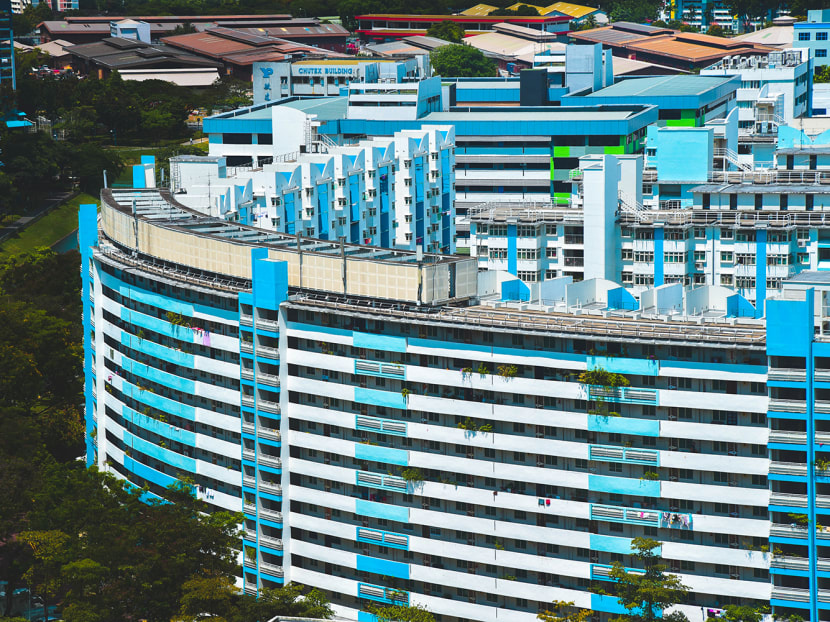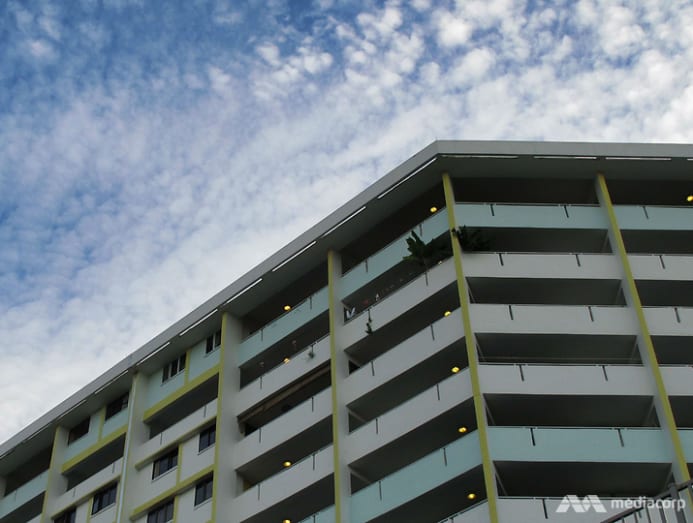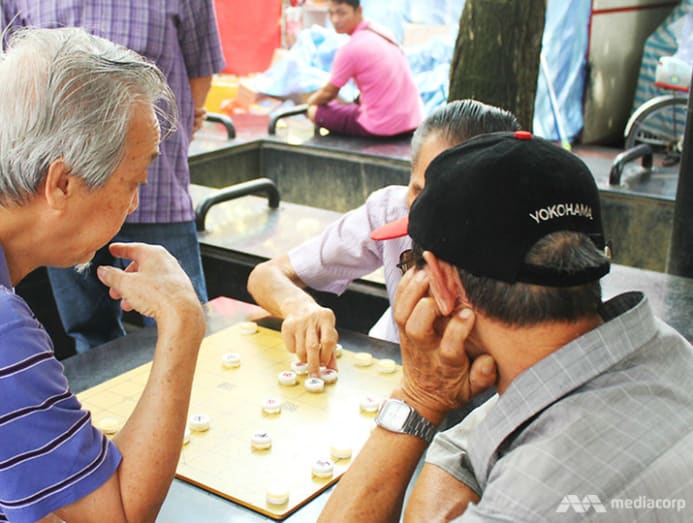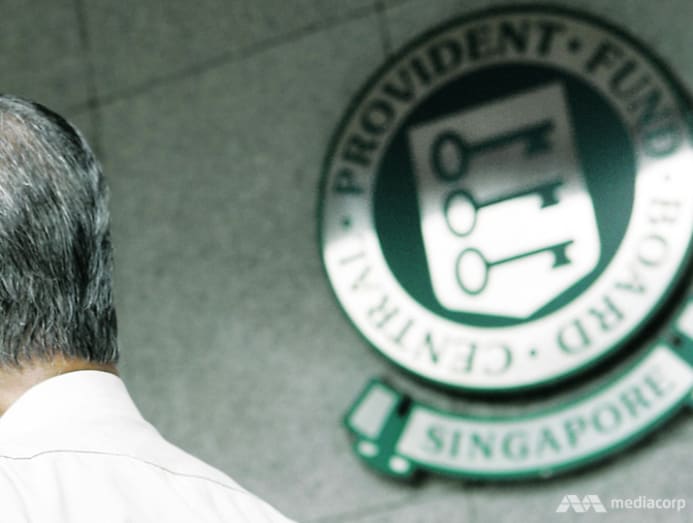commentary Commentary
Commentary: Can shifting the emphasis to renting help solve Singapore’s public housing puzzle?
Finite leases and the use of CPF for housing may mean inadequate retirement income for Singaporeans. What Singapore needs is a broader discussion and more ideas to solve this riddle, says one observer.

The longest curved HDB block in Singapore. (Photo: Gaya Chandramohan)
SINGAPORE: With significant CPF funds being funnelled to housing, and a substantial reason why Singaporeans' retirement savings may be inadequate, Singapore needs to consider that housing and retirement security are two sides of the same coin.
We need to look at other ways to unlock housing equity in a way that resolves the conundrum of the ageing flat and gives home owners adequate retirement funding without disrupting the property market which so many Singaporeans rely on as a source of wealth.
LEASEHOLD PROPERTY NOT REALLY THE PROBLEM
The finite land tenure system in Singapore is hardly unique. In Hong Kong, virtually all land is under leasehold, most with terms of 75 or 99 years.
In Japan, residential land leases of 50 years can be found in urban centres. House prices adjust accordingly. Citizens there generally do not expect the government to swoop in and rescue them when their leases expire.
When new HDB flats are sold with 99-year leases, nearly all Singaporeans benefit up front. At the end of the minimum occupation period, resale prices are almost invariably much higher than the purchase price.
The home owner has also paid for their housing up front, in effect inflation proofing their housing needs – important when house prices are rising.
READ: 99-year HDB leases a chance to review home ownership and retirement policies, a commentary.
READ: An over-emphasis on home ownership can come at a cost to society, a commentary.
The Government also gives an assortment of housing grants to encourage various social goals in housing. The subsidised upgrading programme, present since the 1990s, is also another source of redistribution.

HDB flats may be harder to sell when their leases get shorter, due mainly to restrictions on CPF withdrawals, and the reluctance of banks to lend for houses of short leases.
There is nothing inherently bad about a limited land tenure system. However, given that homeowners expect their leasehold properties to retain their value or appreciate, it is worth reviewing the challenges on the horizon.
HUGE SUPPLY OF FLATS WITH SHORT-TERM LEASES
There are two looming supply issues – an ageing population and the limited leasehold of HDB flats.
You create supply if you sell your flat and move in with your children. When you downgrade from a 90 sq m flat to a 35 sq m flat, you are “creating” a net 55 sq m of housing. When you sign onto a lease buyback with the HDB, you are creating extra future supply. If you pass away, and leave your flat as a bequest, you also create supply.
So we can expect a huge supply of flats with shorter leases in the future but it is unclear if they will have demand.
DEMAND FOR SUCH FLATS LIKELY TO REMAIN MUTED
Why? For one, banks are reluctant to lend money to individuals to buy properties with short leases. There are restrictions on CPF withdrawal to purchase short-leasehold housing.
Second, prospective home owners may also be reluctant to own short-leasehold housing even if the price is right and funding is available.
Third, Singapore’s resident population may shrink over the long term. Singapore’s fertility has been below replacement rate since the 1970s and is currently hovering slightly over 1 child per woman’s lifetime.

A mitigating factor is that the economy of the future might have more workers with intermittent income, or who need to conserve their capital for risk taking. In such a case, renting might make more sense.
DEVELOP A RESIDENTIAL REIT MARKET
A 4-room flat in Toa Payoh with 54 years left can rent out for S$2,000 a month, a potential S$1.3 million in cashflow through the remaining life of the flat, if you ignore both inflation (which increases it) and discounting (which decreases it). This suggests that an ability to unlock the full economic value of a flat through rental is possible, even with older flats.
While flats with short leases may be hard to monetise through selling at present, a residential REIT (Real Estate Investment Trust) can mitigate this by providing a market for such flats.
A REIT addresses concerns with funding flat purchases because it will have access to international and domestic investors, the bond market and bank lending that individuals do not. These stakeholders do not care so much about individual leasehold tenures, but the average characteristics of the housing portfolio.
A REIT run by professional managers will also adhere to regulations, including any conditions placed by the HDB on public housing.
Ownership of REIT shares represent a participation in the residential housing market that is liquid and in any fractional amount desired. They may be a better route to housing as an investment than buying a house.
A householder can choose to downgrade but still participate in any upside in housing by accepting part of the proceeds in REIT shares.
It is possible that one of the reasons for the unpopularity of the Silver Housing Bonus and Lease BuyBack schemes is that home owners expect they will lose out of any future housing market appreciation.
Giving them shares in a residential REIT, instead of depositing proceeds in the CPF retirement account could be an attractive option for some. Restrictions can be placed on the sale of shares, to prevent owners from selling and cashing them out early.

The residential REIT should be allowed to own older HDB flats, purpose-built rental apartments, and private property. New rental apartments will increase the average tenure of the portfolio and its attractiveness. This will encourage both domestic and international investors looking for an alternative way to participate in housing investment.
ENCOURAGING RENTAL DEMAND
The extra rental supply will need extra rental demand.
The Government should seed the rental market by building well-designed, decent housing in good locations and with good amenities specifically for rental purposes. The mix of flat sizes should be chosen to maximise mixing of all socio-economic types.
Existing rental flats for the low income should be gradually retired in favour of giving cash vouchers for low-income families to rent. This will encourage social inclusion and allow families to choose the best possible location for their budget, and family or work circumstance.
The Government could allow CPF to be withdrawn for housing only after a certain balance is achieved in the special account. Cash Vouchers could be provided for young families, with insufficient special account balances, to rent transitional housing.
This has a secondary purpose of ensuring a good CPF balance for young families before they start to own property, as well as to improve their retirement security.
A good CPF balance at the beginning of one’s working life is more beneficial given the benefits of compounding interest. For example, S$25,000 in one’s special account compounding over 30 years with current CPF interest rates becomes can reach S$101,000. This accumulation would be even more significant for lower middle-income families.
S$25,000 is not hard to accumulate if you top up your special account from your ordinary account balances. With a S$1,500 monthly salary, one only requires five years to accumulate that balance.
Addressing the challenge of how ageing HDB flats can retain their value so that homeowners can monetise their homes for retirement income in a way that doesn’t disrupt the property market is an imperative for Singapore.
More ideas will be needed so that Singaporeans can have a constructive discussion about the future of public housing.
Tan Jin Meng is a postgraduate from the Lee Kuan Yew School of Public Policy with an interest in social policy and economics.





